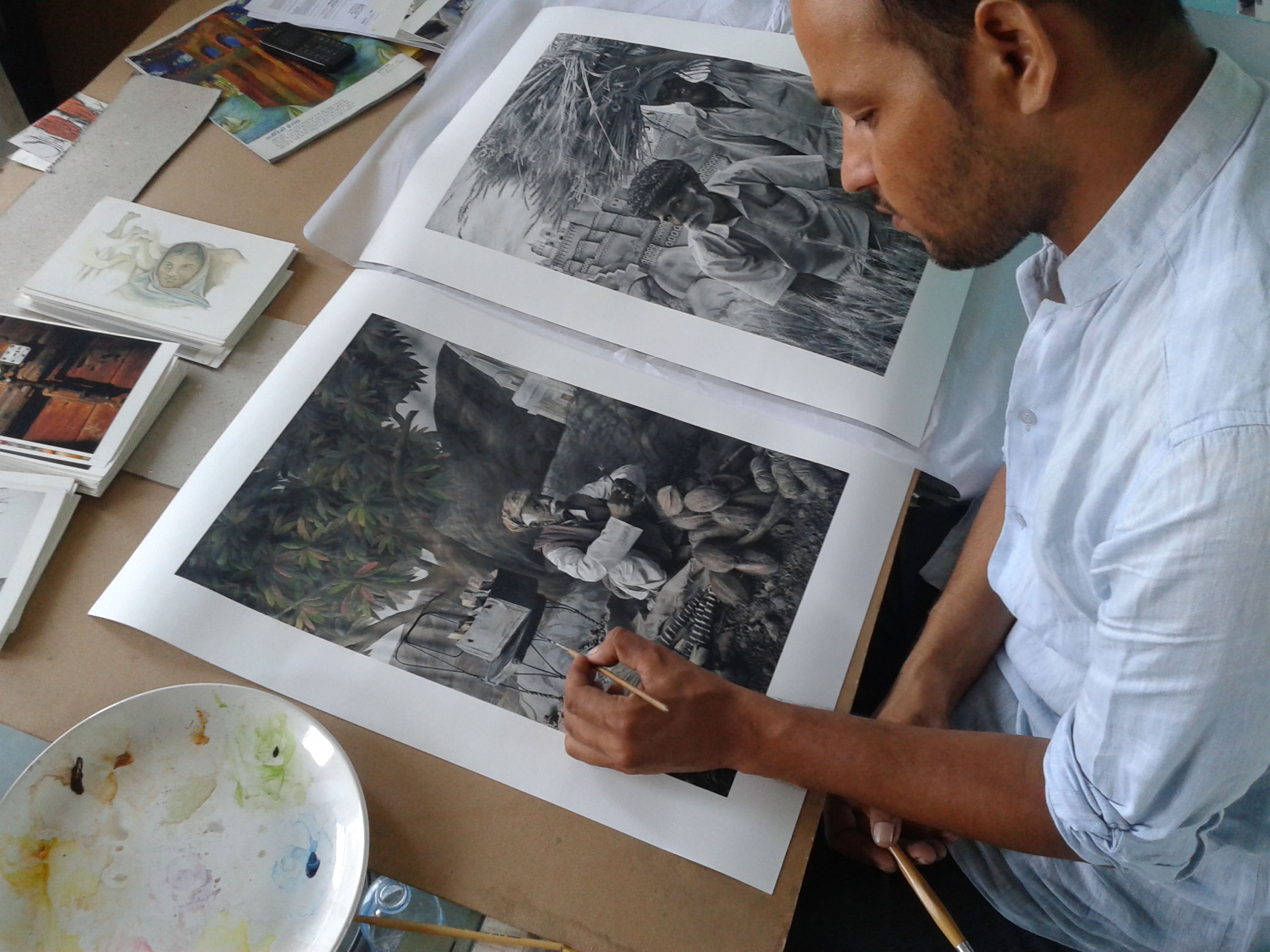
(Photographs courtesy: Waswo X Waswo (with Rajesh Soni)
Gauri: The enigmatic opera
Sep 2019 by Sourced from Livemint.com
- A new book by Waswo X. Waswo, published by Mapin, documents the little-known world of Gauri performers
- The only English-language book on the style, it features portraits of performers, mostly farmers by profession, who transform into actors for 40 days
There is an element of the fantastical in the book Gauri Dancers by artist Waswo X. Waswo. One can see photographs of young men, often cross-dressed and with make-up, posing against elaborately painted sets, some featuring the local flora, others the majestic forts of Mewar. It???s not every day that one comes across material on Gauri performers. This unique performance style, practised in the interiors of southern Rajasthan, has been largely undocumented. The little written on it is academic, in Hindi or another Indian language.
In fact, Gauri Dancers, launched on 8 September in Udaipur by Mapin Publishing, is the only English-language book on the style, also known as Gavri or Gavari. It features portraits of performers, mostly farmers by profession, who transform into actors for 40 days just after Raksha Bandhan. There is a certain theatrical touch to the photographs, with the performers having been whisked away from the traditional setting of village squares and town roundabouts, and plonked in the middle of Waswo???s studio in the village of Varda, on the outskirts of Udaipur. There, dressed in their elaborate attire, against vibrant backdrops, they seem to act out a performance of another kind.
???Does Waswo???s bringing of the chaos of Gavri into a studio setting, with its shift from the kinetic to the formally posed, give nod to his own devious intervention? And what of the backdrop paintings and Rajesh Soni???s hand-colouring, that further highlight the idiosyncrasies of the scenes unfolding?” writes Pramod Kumar K.G., co-founder, Eka Archiving Services, in the preface to the book. He says the sense of unreal posturing and impermanence captured by the photographs of Waswo and the colouring by Rajesh are a befitting filter.

Till three years ago, Waswo, a US-born and Udaipur-based artist, had only seen Gauri performed in villages. Not many from outside southern Rajasthan were even aware of the style. ???It was in 2010 that I made my first photo of a Gauri dancer as part of my regular Studio In Rajasthan series, for which we had been photographing different kind of people from the Udaipur area,” says Waswo on the phone. He is showing some of the photographs from the book at the City Palace, Udaipur, till 22 September. A year after the first photograph was taken, the artist came across a man on the streets of Udaipur selling papier-m??ch?? masks worn by Gauri dancers. An illustrated short story on this interaction has found its way into the book too.
???So, I looked at the photos taken earlier and realized this could be a book,” he says.
It was about the same time, around three years ago, that the state government and some non-governmental organizations started promoting Gauri as a tourist event. In doing so, they shrunk a days-long performance into an hour-long event. ???I became worried that Gauri might get corrupted, much like Kathakali got condensed into a small packaged thing. The original tradition might fade away soon,” says Waswo. So he started photographing Gauri dancers. But he did so in his trademark studio portraiture style, shot like a miniature painting and hand-coloured by Rajesh. ???Instead of shooting a live performance, I wanted to focus on the characters and the people,” he says.
There are many conflicting stories about the origin of the style, even its name is up for dispute. ???In the village, the performers call it Gauri, some say Gavri, academics tend to call it Gavari. The intention of the book is to open up the conversation???this is what we know, this is the information we have access to, and more. So we hope the book will act as a springboard for further investigations on the style,” says Waswo.
According to Sonika Soni, a Pune-based art historian who grew up watching Gauri performances and has written an essay in the book, the style is practised by the men of three nomadic tribes???Bhils, Gametis and Meenas. ???For 40 days, these performers fast, eating only once a day, enacting stories about Shiva, Bhasmasur, Mohini and Parvati, and believing that through some divine intervention they are connected with God for that period,” says Sonika. The two leading female characters, called rais, are always Parvati and Mohini; the husband is called rai budhiya. ???He is the only character who gets to wear a mask, the design of which is specific to each community from the region,” she says.
These masks are kept in the temples of the kul devi (family goddess) and taken out only for the performance. The rai budhiya is a free-flowing character, defying the few rules that bind the performance. ???If the rest are dancing in a circular motion, he will go anti-clockwise. Also, since his basic identity is hidden behind a mask, he gets to play the evil character as well as Shiva,” says Sonika.
The oral tradition has been passed down generations. The children in the community are entrusted with filler roles, and learn from watching the elders perform. The dialogue is often impromptu, peppered with jokes about politics or current issues.
Though there are other performing styles, such as Bihar???s natua naach, which are performed only by the men of a community, Gauri is perhaps the only dance about which so little is known. ???It is tribe-based, practised in the interiors. Moreover, it is performed only out of devotion and not commercially. They don???t charge a single rupee,” says Sonika.
Waswo was initially hesitant about the book, concerned that calling attention to Gauri could lead to intervention in a style that is so natural.
???These boys work in villages. But then (the time for) Gauri comes and they are putting on saris and make-up and taking on the roles of women???they really get into the spirit of things. They are not professional actors by any means. I was afraid of changing all that. So part of what we wanted to do in the book is to keep it a little mysterious,” says Waswo, who is looking forward to the Delhi and Ahmedabad launch events.


Get you own copy from Mapin Publishing here
